Budz Lightyear
Member
Lets pray this can be over soon 
Actually no I didn't know exactly who you were directing it at which is why I thought you were directing it at me. These threads can get confusing at times though and discussions can get unintentionally crossed so I'll just take you at your word and I apologize for misunderstanding your intent.
I hear you and I struggle thru the many pages popping up each day. It's easy to get confused especially when people just copy and past large sections of some other page rather then putting their argument in their own words. If I were to properly scrutinize the new pages that pop between the once a day visits I make I would find myself her for 10-12 hours or more and that would have me seriously neglecting aspects of my life that are infinitely more important then trying to convince people to look at things differently when they're completely closed to any other opinion then their own or the one's they quote from dubious web sites that support their particular point of view. If we tried to sort it out it would probably prove out that both of us misunderstood something. Anyway like I told HH in and earlier post this side topic is now 3 or 4 days old and as such not really worth pursuing any more. I'm inclined to write it off as a mutual misunderstanding due to the "Fog of BS"
Actually no I didn't know exactly who you were directing it at which is why I thought you were directing it at me. These threads can get confusing at times though and discussions can get unintentionally crossed so I'll just take you at your word and I apologize for misunderstanding your intent.
A peace deal wont be too good for the MIC contractors,... I wonder what the chances are of something happening to Zelensky before he can agree the deal?


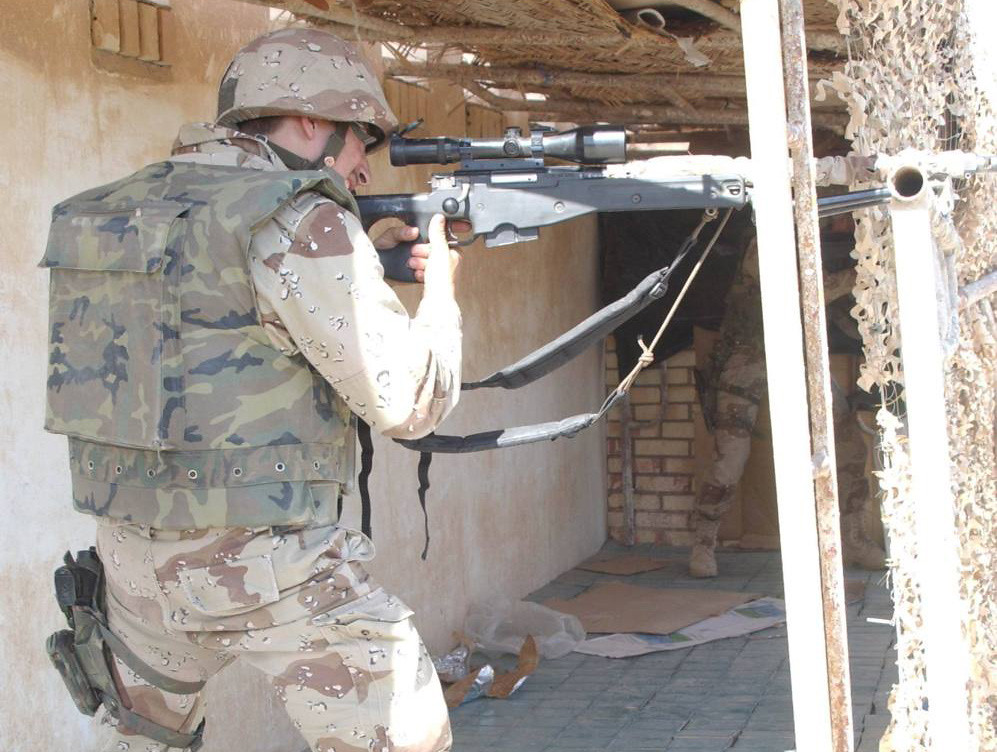

Because it was driving me nuts, I went back and looked at my post. IIRC, it was between pages 165-167. I wasn't really responding with anything specific to your, or h.h posts. I was just ranting about how trolls operate and where they get their inspiration from. I guess it was an off-topic reply of sorts so I can see how that would come across as confusing. Sorry again about that!
A peace deal wont be too good for the MIC contractors,... I wonder what the chances are of something happening to Zelensky before he can agree the deal?

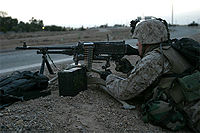 Marine USA guarding highway number 1, on the outskirts of Fallujah.
Marine USA guarding highway number 1, on the outskirts of Fallujah.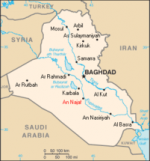

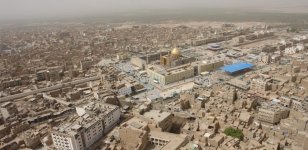

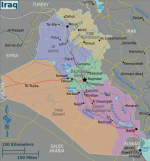
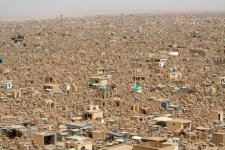
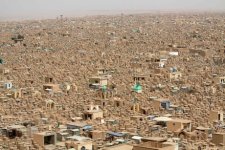
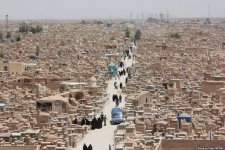

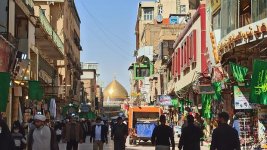
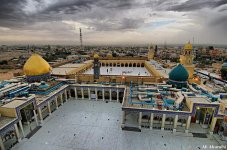
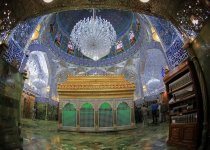
(Editing...)
1 - From the Faluya "Sunnie explosion", to the Najaf "Shiie explosion".
https://www.google.com/url?sa=t&sour...p2mt3ER1liQ-vK
Another fragmented video on the Battle of Najaf, this time with more images from the "Shiite insurgent side".
[FONT=PT_serif]Najaf was not just any enclave, but the Shiite holy city, a hub for massive pilgrimages and sacred burial ground. Tomb of Ali Ibn Abi Talib , Muhammad 's cousin , married to Fatima , one of the Prophet's daughters, and origin of the Shiite branch of Islam. A religious volcano. A powder keg. A hornet's nest.
About Najaf:[/FONT]
An Islamic holy city, Najaf, is home to the shrine of Imam Ali Ibn Abi Talib, the Prophet Mohammad's cousin and son-in-law and fourth caliph (656-661). Najaf also contains one of the largest cemeteries in the world. According to Imam Ali, any Muslim buried here will enter paradise; as a result, the tombs of several prophets are found in Najaf. Shia Muslims especially consider it a privilege to be buried here. Like Karbala, Najaf became an important center of Islamic scholarship and theology. During his exile from Iran, Ayatollah Khomeini lived here for 12 years prior to the 1979 revolution in Iran. In 1999, the Iraqi Shia leader Ayatollah Mohammad Sadiq al-Sadr was assassinated in Najaf, sparking clashes between Shia and the Iraqi government.
In the nineteenth century, the shrine cities of Najaf and Karbala in Ottoman Iraq emerged as the most important Shi'i centers of learning. Najaf is known for being an Islamic center for scientific, literary and theological studies for the whole Islamic world and mainly for the Shiites, therefore Najaf is attractive for a large number of people, poets, authors and other visitors from China/India, Lebanon, Pakistan and Iran which is estimated annually over half a million.
Najaf has a population of 560,000, and Muhammad's son-in-law, Imam Ali bin Ali Talib, is buried in the Imam Ali mosque. Iran's Grand Ayatollah Ruhollah Khomeini spent 1964-78 in exile in Najaf. The holy city of Najaf is located 160 kilometers South of Baghdad and 60 km to the south of Hilla. Najaf in arabic means a high land where water cannot be reached. It is a city situated on high plateau over a sandy ground looking down from northern and eastern sides on wide scope camp of domes and tombs called valley of the peace. Najaf is a city of low-level sprawl, with boulevards lined by trees, arched brick buildings, and streets filled with bearded clerics wearing white or black turbans. Najaf is the spiritual center of Shiite Islam, site of the shrine of the Imam Ali, son-in-law of the Prophet Mohammad and first leader of the Shias.
Four senior Grand Ayatollahs constitute the Religious Institution (al-Hawzah al-`Ilmiyyah) in Najaf, the preeminent seminary center for the training of Shiite clergymen. Before the 1979 Islamic revolution in Iran, Najaf was the most important center of study for Shia religious leaders. However, Saddam Hussein ordered mass arrests and the expulsion of senior clerics, giving the Iranian seminary in the city of Qom the opportunity to take over the religious leadership of the Shias. Qom was the pre-eminent religious center for Shia Muslims for 25 years. But Najaf has a history of more than a millenium of leadership, and the Iranian clerics who run the holy city of Qom, are facing a revived rival. As of mid-2003 the seminary in Qom hosted between 40,000 and 50,000 clergy, while the number in Najaf stould at about 2,000, down from about 10,000 before the Ba'ath regime took. The first exodus from Qom to Najaf is expected to be by exiled Iraqi clerics, estimated to number between 3,000, and 5,000.
Qom may face a challenge over the concept of the Velayat-e-Faqih - the God-given authority for a top religious leader to oversee secular in the absence of the Prophet Mohammad and infallible imams. The Najaf school does not interpret the Velayat-e-Faqih as meaning the direct intevention of religion in politics. The Najaf seminary's view of the Velayat-e-Faqih is that of a supervisor and adviser. The Qom school believes the opposite, with Iran's supreme leader, Ayatollah Ali Khamenei, officially considered as the highest religious authority of the world's Shias. Qom sees the direct involvement of clerics in state ruling and executive affairs as their legitimate right and moral obligation.
For months before, it had been observed in Najaf, and more specifically in the Ali Mosque, a holy place for the Shiites, the presence of Islamic courts that applied the sharia, and with which Muqtada Al Sadr was extending his power over the population .
. The two main clerics were at loggerheads over whether or not to collaborate with the foreign troops. The dispute was settled by arms. The Mahdi Army, under the orders of the cleric Muqtada al-Sadr (the same one who in May 2018 was the top vote-getter in the first post-Islamic State Iraqi presidential elections), assassinated the cleric Abdul Majid Al Joei.
They then began to organize a parallel administration in the city. They took advantage of the fact that international troops could not enter holy places to use the Kufa mosque as a nerve center, where they kept weapons and conducted military training. In the Ali mosque they set up religious courts to enforce Sharia (Islamic law) and dungeons.
The Americans exhorted the Brigade under Spanish command to neutralize them. Due to the sensitivity of the context, the operation that was designed for this purpose, and which was finally scheduled for February 20, 2004, left the leading role to the Iraqi police, in order not to cause the offense that the entry of foreign soldiers would represent. and infidels in sacred precincts.
[FONT=PT_serif]The atmosphere at the base had been tense since, in February, the Coalition Command, led by Paul Bremer from Baghdad's Green Zone, had, among other measures, ordered the BMPUII to neutralize the young and extremist cleric Muqtada Al- Sadrand its armed wing, the Army of the Mahri, a fanatical barrage militia. Coll, as in other US initiatives, raised military and diplomatic objections.[/FONT]
[FONT=PT_serif]The Americans, in favor of expeditious methods, did not understand the propensity of the Spanish to negotiate rather than shoot. Nor his consideration towards local customs and institutions to avoid greater evils. They accused them of cowardice. But our Rules of Engagement were very restrictive. Therefore, later, after the March 11 attacks that led to the electoral victory of the PSOE , the Army found itself facing a power vacuum. Aznar was leaving and Zapatero had included in his program the withdrawal of the Spanish troops[/FONT]
American Discrepancies
As of February 21, 2004, the Spanish commanders knew that something key had changed in their mission in Iraq and that bad times were ahead. The Spanish troops embedded in the Plus Ultra Brigade had arrived in Iraq on April 9, 2003 and their work in the Diwaniya and Najaf area was to maintain peace and participate in reconstruction.
However, the US command led by Hispanic General Ricardo Sánchez, instigated by the civil officer Paul Bremer, and both pressured by the intense trickle of US casualties, demanded that the Spanish be more involved in combating the insurgency.
The Spanish refusal was constant, creating certain tensions between General Sánchez and the Spanish generals, first with Alfredo Cardona and later with FulgencioColl.
The Americans came to disparagingly call the Spanish contingent, known by its acronym BMNPU II, as" the teddy bear that stays still, Winni the pooh II."
February 21, the US command intended to carry out an operation to end the courts of Sharia, Islamic law. A very delicate action against the Shiite leader Muqtada el Sadr. Neither Spaniards nor Iraqis wanted to do it with the consequent discomfort of General Sánchez. From then on, US special forces carried out different missions in the area with the consequent increase in tension that reached its peak on March 31, 2004 with the murder in Fallujah of four alleged US contractors, mercenaries from the Blackwater company, whose corpses were brutally beaten,
[FONT=PT_serif]On March 31, the murder of four contractors led the SEALs to the violent capture of [/FONT]Mustafa Al-Yaqubi[FONT=PT_serif] , Al-Sadr's lieutenant. It was rumored that the Americans wore Spanish badges so that the Shiites would hold our people responsible for the action, attack the base in retaliation and force them to fight.[/FONT]
As part of the Iraqi occupation, the first Battle of Fallujah , codenamed Operation Vigilant Resolve , was an unsuccessful attempt to occupy the city of Fallujah by the US Army in April 2004 .
Marine guarding highway number 1, on the outskirts of Fallujah.
The main motivation for the operation was the widely publicized killing and maiming of 4 Blackwater Worldwide military contractors and the killing of 5 US soldiers in Habbaniya a few days earlier.
The siege by US forces on the city polarized public opinion on the situation in Iraq . The battle would cost the lives of approximately 600 civilians.
On March 31, 2004, Iraqi insurgents ambushed a convoy of four Blackwater military contractors who were conducting a supply drop. The men; Scott Helvenston, Jerko Zovko, Wesley Batalona and Michael Teague were killed by heavy machine gun fire and a grenade, which was thrown into their vehicle. Shortly after, a mob set their bodies on fire and dragged them through the streets, later to be hung on a bridge that crosses the Euphrates River.
Initially, the US local command tried to treat the matter as a police case, directing operations of this type against the executors of the contractors, but, given the pressure of the images broadcast of the death of the Americans, it was arranged that it be treated as a counterinsurgency operation, typically military.
Consequently, the Marine Corps' strategy of foot patrols, less aggressive interventions, humanitarian aid, and close cooperation with local leaders was suspended with the intention of cleansing the city of Fallujah of insurgent groups.
On April 1, Brigadier General Mark Kimmitt, the US Army 's second in command of operations in Iraq, promised an overwhelming response: the death of the four Blackwater contractors, saying they would "pacify the city . "
On April 3, the First Expeditionary Force received a written order from Operations Command , decreeing a large-scale offensive operation against insurgents in Fallujah . This order ran counter to the wishes of several Marine Corps commanders, who sought targeted interventions and hits to stop those suspected of killing Blackwater employees.
As military operations began in the city of Fallujah, the fighting intensified, attracting mujahideen warriors from all over Iraq.
The internal political conditions of Iraq, in which the first post-Saddam Iraqi government was established, forced a halt to the military operations carried out in the city. However, the flow of warriors to that city continued.
But, returning to Nayaf....
(in edition...)
Putin's not going to take any deal. His claims of just wanting the separatist regions are a smokescreen, If that's all he wanted he could have accomplished that day one and have this whole thing looking like an amazing victory for Russia. His goal all along has been to take the whole country which is why he's now bombing western border cities rather then moving to his alledged phase 2 of taking the separatist regions.
No big deal, like I said, it's so far in the past now there's no real point in discussing it more. We all make mistakes, even if some of us here, like certain Russian propaganda repeating trolls whom I shall not name, are incapable of recognizing in themselves.
Some people used to say that they didn't like to open links because of computer security, and they preferred to go directly, I think?
Anyway, I am using multiple sources to try to give a chronological development, and it would be chaos to have links after each paragraph (but many texts contain words that are links to the original).
If you use one source at a time, the story would be very chaotic for those who do not know the subject. As an example, I give you one of the most consulted pages, being more oriented to the US version and the Blackwaters. As you can see, the exposition is very chaotic for those who do not know anything previously I leave you the link, and I only translate a contribution in Spanish that is missing in English):
https://web.archive.org/web/20091218135143/http://najafproject.iespana.es/project.html
Extracted from the book "And at the end of the war", The adventure of the Spanish troops in Iraq. Luis Miguel Francisco and Lorenzo Silva )
Najaf, Iraq, April 4, 2004, 12 noon. The «Al Ándalus» Base is attacked by the Mahdi's army. More than two hundred Spanish soldiers, mostly belonging to the Mechanized Division, find themselves in a few seconds in the heat of a fierce battle. That day will mean the explosion of a conflict created by some invaders who dismantled a country without being able to foresee how to rebuild it, and in which the Spanish military were involved without anyone in Spain knowing how or many understanding why.
From that day on, the Spanish, who suffer continuous attacks and are the object of innumerable ambushes, have to use weapons again and again to defend their lives against a fanatical and suicidal insurgency that sends children armed with grenade launchers to attack them.
"And in the end, the war" is the moving account of the work of the Spanish troops in the land of Iraq, of what they experienced while the mission lasted. It is a story of war in the so-called Iraqi peace. Luis Miguel Francisco and Lorenzo Silva have managed, based on testimonies and unpublished documents, to fit the pieces together and exhaustively reconstruct a crude and ruthless story, as full of fire, courage and death as it is unknown and silenced. With a fast-paced style, they have managed to show the truth of war through prose that is destined to become one of the classics on military investigations.
" I'm here to get you out of here"
"As soon as they left the perimeter of Camp Golf and took the Lulú Route, they began to feel the bullets hitting the walls of the armored vehicle. Ensign Guisado had contacted the Salvadorans who had not been able to get out on the first trip by radio, he needed everyone to be ready When they reach the intersection with the Annie route, they cross paths with the Salvadoran section that had left shortly before, on foot, to reach their companions.
They are blocked by the Iraqis and they already have several wounded, it is impossible for them to advance. Guisado passes them trusting that on the way back they will continue to maintain that position and can ensure their exit and return to the base.
The Spanish officer orders the column to stop and speaks with the soldiers from El Salvador blocked in the street. The fire that harasses them comes from the same building that they had already hit on the previous trip, and Guisado decides to deploy the section to face the objective. Soon the deployment is verified and the weapons that fire from all corners of the armored vehicles punish the house with force. They manage to silence the enemy and also get the Central Americans to remake their position. The march continues, Salvadorans are informed that they will be recovered once they return from jail.
The intersections are still the worst obstacle, it is there above all that the fire is received, and the shooting targets are repeated in the same places, although now the enemy attacks with less vigor. Suddenly, about two hundred meters from the last intersection, two vehicles appear whose occupants begin to fire shots from inside the passenger compartment. Machine guns fire at them. The aggressors do not stop, they keep firing while they continue marching, further and further away from the Spanish armored vehicles. From the turret of the BMR you can see how the bullets turn the sheet metal of the cars into a sieve,
They are about to reach the last intersection, the most complicated of all. Through the radio, Lieutenant Guisado gives the precise orders and the armored vehicles are placed in line with the aim of once again clearing the buildings in front of the prison by fire. They carry out the maneuver as fast as they can, we must not let the enemy reorganize and manage to ambush them. Next, the Spanish armored vehicles re-enter the prison. There is nothing new, just a few more holes in the most vulnerable area of the BMR. But everything is going smoothly, the road has been made faster than the previous time.
"I'm here to get you out of here"..."
Ed. The Sphere of Books
I find it interesting. It makes it hard to find the other posts.